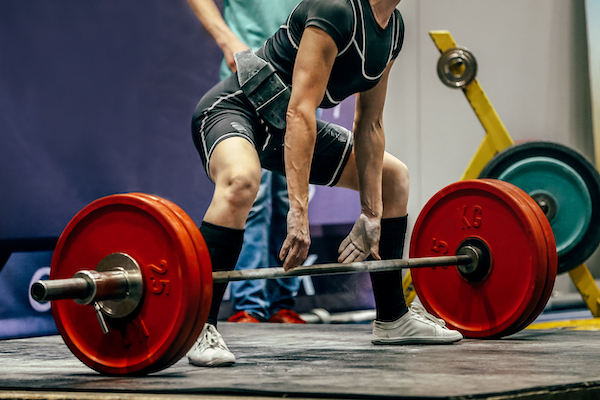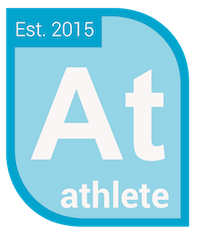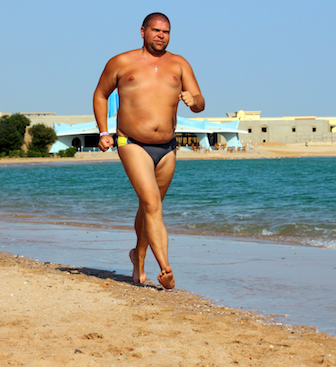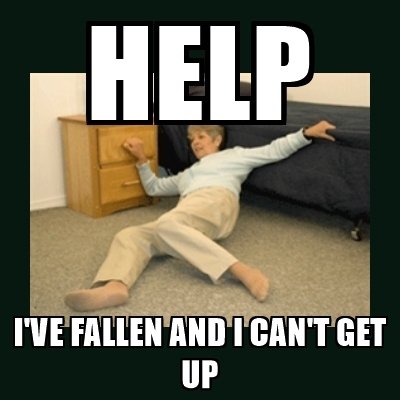Are you struggling to increase your deadlift?
If so, this article is for you. I’ll walk you through the most common sticking points and the movements you probably need to add to unstick your deadlift and hit new PRs.
First, do you know where you’re sticking point is? This is the point where, when you’re attempting a very heavy lift, you can’t move past it. For most lifters their deadlift sticks at one of two places:
- getting the bar off the ground
- right around their knees.
Step one is determining your sticking point and then armed with that information, you can move to the relevant section below to learn how to unstick it.

Here’s a sneak peak of what’s to follow. Read on for a description and links to videos for each of these accessory movements.
Stuck Pulling Off The Ground
Most often due to poor tension and / or a lack of pushing strength from your legs.
- Dead Bugs
- Coan Deadlift
- Deficit Deadlift
- Low Pause Deadlift
- Halting Deadlift
- Belt Squats
- Reverse Nordic Curls
- Pendlay Rows
Stuck Around The Knee
Most often due to a lack of hamstring and / or lat strength.
- Romanian Deadlift
- Touch & Go Deadlift
- Pause Deadlift (at knee)
- Barbell Row
Can’t Get It Off The Ground
Symptoms: This is a pretty self-explanatory fault. When you go heavy with your deadlift, the first place you experience trouble is getting the bar off the ground.
Possible Root Causes: weaker quads or lats, poor tension, lack of pushing strength from legs.
Below are some movements that can shore up those root causes and help you get that bar off the ground and set new maxes with your lift.
Before I share the movements with you, please know that it’s ok to use lifting straps with most of these movements. The purpose is to fix weaknesses related to leg or lat strength – using straps to take your grip out of the equation may be helpful for that.
Dead Bugs
I know they’re not super sexy, but many lifters have poor bracing mechanics and dead bugs are a very powerful tool for improving that. Don’t half-ass these. Be intentional.
Lay on the ground with your arms pointing toward the ceiling and your legs up like you’re sitting in a chair (get it… dead bug position). Now press your lower back into the ground so that it makes contact with the surface.
At this point, there are many variations of the movement from beginner to advanced, take a look at the video below for a breakdown and pick one to get started with. There is no shame in starting with the beginner variation.
Coan Deadlift
This is an interesting movement that most lifters are completely unaware of. It is especially beneficial in teaching you how to create and maintain tension in your body while deadlifting.
This variation starts as any normal deadlift does. You pick the bar up off the ground and lift it up to hip level. However, on the eccentric (lowering) portion of the movement, you slow things down. You lower the bar to the ground as gently as possible, as if you don’t want the plates to make any noise when they make contact with the ground.
Deficit Deadlift
This is the most common movement lifters use for improving strength off the ground. You stand on a platform so that your feet are elevated relative to the bar. Then you deadlift.
Remember, a larger deficit isn’t always better. Too big of a change completely alters your positioning and diminishes the transferability to your deadlift. The best platform height for most lifters is probably 1 – 2 inches.
Low Pause Deadlift
With this variation, you lift the bar about 1 inch off the ground, pause for a full 2 seconds, then accelerate out of this position to full lockout. No cheating… this is meant to be a full pause, not a slow down.
Halting Deadlift
Sometimes what you need is more reps where you’re struggling, this movement accomplishes just that. You deadlift the bar off the ground but stop at knee level. Then you lower the bar back to the ground and do a full deadlift – giving you more reps off the ground compared to traditional deadlift movements.
Quad Weakness
Weak quads can severely limit drive strength off the ground so training focused on these muscles can be powerful for boosting your deadlift. There are too many movements to outline individually here, but consider belt squats, reverse nordic curls, front squats, and safety bar squats. When doing these movements, it may also be beneficial to experiment with a pause in the bottom position.
Lat Weakness
An upper body muscle probably isn’t the first thing that comes to mind when considering what’s holding back your deadlift, but your lats have to work very hard to help you maintain proper positioning of the bar during the movement.
Pendlay rows are an excellent training exercise for the lats. Make sure to keep tension in your lats during the full range of motion though. Some lifters have a tendency of releasing tension at the top of the movement and basically just letting the barbell fall to the ground. Avoid this, it negates much of the benefit.
Also, if you’re curious about Pendlay row vs. “regular” barbell row, the Pendlay row requires you keep your back parallel to the ground during the movement. A “regular” barbell row doesn’t specify back position.
Failing Around The Knees
Symptoms: When going heavy you always fail right around your knees.
Possible Root Causes: lack of hamstring or lat strength.
The same thing with lifting straps applies for these movements as it did in the previous section. It probably makes sense to wear them with most of these accessory movements if you’ve got them.
Romanian Deadlift
There is pretty much no better movement for building transferable strength for the traditional deadlift. If you care about picking more up off the floor, this movement should be in your program.
If you’re unfamiliar, the RDL is similar to deadlift in reverse. You start with the bar in lockout position and lower it down to about mid shins, though the exact place you end up will depend on your flexibility. You want to have soft knees during the movement, but essentially keep straight legs for the entire range of motion. As you lower the weight, think to yourself – “I need to push my ass backward.”
I suggest videoing yourself when performing this movement because many lifters think they’re keeping straight legs, but are not at all. You may be shocked by what you see 🙂
Touch & Go Deadlifts
I know this movement carries a lot of baggage, but under the right circumstances, it can be a powerful training tool. If you’re not an experienced lifter and can’t maintain solid form though, you should probably avoid these.
The TnG Deadlift leverages the fact that you get a little bounce off the ground when you set the bar down. You let the bounce of the previous rep help you with the start of the next rep.
This is very helpful for lifters that get stuck around the knee because it provides an assist getting the bar off the ground, but makes you continue to work at knee level. So, essentially it’s increasing the volume of work you can perform at knee level.
Pause Deadlift
Even though your deadlift sticking point is at or just above your knee, your strength limitation is likely just below this point. It’s this lower point where you lose momentum and the bar slows, ultimately stalling out and failing you at a slightly higher position. So, we need to train this faulty position.
In the pause deadlift, you lift the bar just below your knees and pause for a full 2-second count. Don’t half-ass the start of the movement. Pull off the ground like you mean it. Full stop just below the knees for two seconds. Accelerate all the way to lockout. That’s the pause deadlift.
Lats Again
Remember, the lats are often overlooked, but very important in deadlifting. They primarily help with keeping the bar close to your body during the movement. To train the mid-range, I like the bent over row.
In this case, I find it a little more beneficial to keep your back in a slightly more upright position as compared to the Pendlay row listed in the previous section.
How To Add These Movements To Your Training
Did you find a few new movements you’d like to experiment with in your training? If so, you may now be wondering how to add them into your program.
Most of the movements outlined above are intended to be used as accessories to your primary lifts for the day. This means you should knock out your primary lift(s) and then add these to the backend of your training. A solid starting point is adding a few sets of 5 – 10 reps. Where you go from there depends a lot on your specific imbalances, goals, etc.
Hopefully, this helps. If you use any of these tips to increase your deadlift or if you have other movements that have helped you in the past, be sure to leave a comment below.
Let’s Wrap It Up
In case you don’t like reading, here is a bullet list of each movement that may be beneficial for the two deadlift sticking points outlined above.
Stuck Pulling Off The Ground
Most often due to poor tension and / or a lack of pushing strength from your legs.
- Dead Bugs
- Coan Deadlift
- Deficit Deadlift
- Low Pause Deadlift
- Halting Deadlift
- Belt Squats
- Reverse Nordic Curls
- Pendlay Rows
Stuck Around The Knee
Most often due to a lack of hamstring and / or lat strength.
Are You Doing Everything You Can To Build Muscle?
Our FREE Max Muscle Checklist walks you through the most important, science-backed steps for promoting muscle growth. These include training, nutrition and lifestyle. If you’ve been struggling to add lean mass or if you’re just looking to maximize your muscle development, click the link below to download the checklist.


